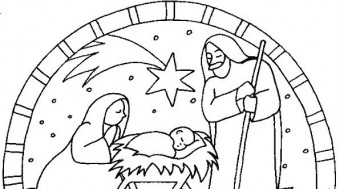
Christmas in August: Court allows Nativity
WND
Determines government censored display over religious message

A federal appeals court panel has ruled that a Michigan county improperly censored a Nativity because of the religious content of the Christmas-season display, and ordered a lower court to resolve the situation in accordance with its ruling.
“Although the lawsuit is not yet over, we are tremendously pleased with the unanimous decision of the 6th Circuit Court panel,” said Richard Thompson, president of the Thomas More Law Center.
“This is a great victory for private religious speech in a traditional public forum,” added Robert Muise, who was with the Thomas More Law Center when the case was begun, but now works with the American Freedom Law Center.
“As the 6th Circuit confirmed today, Mr. [John] Satawa’s private religious speech is as fully protected under the Free Speech Clause as secular private expression. We are pleased that the 6th Circuit not only restored Mr. Satawa’s cherished holiday tradition, but upheld the protections afforded to all private citizens by our Constitution.”
The dispute centered on a display that has been on a public property in Macomb County, Mich., for decades. Then in 2008, the county ordered the holiday displayed removed.
The Thomas More Law Center in 2009 brought a case on behalf of Warren city resident John Satawa, whose family has maintained the display from 1945 on, against the Road Commission for its decision to censor the message.
A federal judge upheld the county’s decision to ban the display, but the appellate judges said the decision had to be reversed on free-speech and equal protection challenges.
Those who worked on the case said it was 1945 when St. Anne’s Parish was established in Warren. At that time Christmas statues depicting the Nativity were donated, but since they were too large to be inside the church, the congregation obtained permission from the village to display the scene on the median of a local street.
The government finally stopped it when a protest was received from the Freedom From Religion Foundation.
However, the appeals court ruled that the land was a public forum, since the government had a process for citizens to display structures on public rights-of-way – and there were, in fact, several improvements on the median in question including old farm implements as well as a gazebo.
On appeal, the county had argued that it made the decision based on the safety factors involved.
“Before this lawsuit, there was no indication that safety concerns played any role in the board’s decision. Quite the contrary. Even though Satawa’s permit application specifically claimed that the crèche did not obstruct traffic or pose ‘any other safety concerns,’ [the county's] letter denying the permit only addressed religion,” the judges wrote.
The judges noted that the rejection letter said, “The Road Commission of Macomb County cannot permit you to display this Nativity scene in the Road Commission’s right of way. This undoubtedly would be interpreted as our endorsement of religion…”
Wrote the judges, “Not once did he use the word ‘safety;’ not once did he use the word ‘traffic.’
“If [Macomb County Road Commissioner Robert] Hoepfner’s concern really were traffic safety, it is implausible that there would be no mention of traffic safety in either his letter to Satawa or his presentation to the board. Hoepfner’s dealing only with religious concerns in documented letters and discussions before litigition began strongly suggests that the Establishment Clause, not safety, was the reason for his decision.”
http://www.wnd.com/2012/08/christmas-in-august-court-allows-nativity/print/
